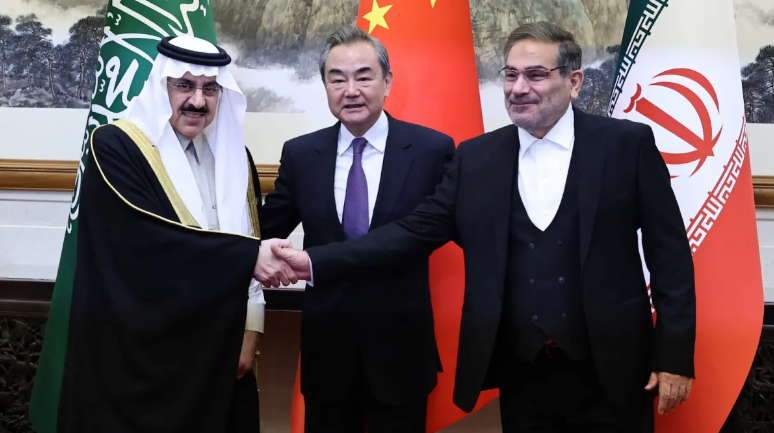
Russia is surviving the economic downturn and is on the rebound. Since the start of the Russian invasion of Ukraine in 2022, 37 countries have imposed sanctions. There are very few instances of this in recent history. The ban has been targeted at the 10 largest sectors of the economy. These include sectors like energy, technology, travel, shipping and aviation, and freight.
In 1990, when Saddam Hussein launched an invasion of Kuwait, the United Nations imposed sanctions against Iraq. The country’s economy was crippled by it. Economic pressure on Moscow was nothing like that.
A year after the imposition of sanctions on Russia, a few things are now clear. The sanctions hurt Russia’s economy and its future growth. But sanctions are neither collapsing Russia’s economy nor helping to stop the war in Ukraine.
There is much debate about the extent to which Western sanctions are affecting Russia due to the dominance of the US dollar. But Western sanctions on Russia, which have led to a strong backlash, are not discussed in that way. The diversification of trade caused by Western sanctions has given new life to Asian economies.
The first use of sanctions in modern economics dates back to the early 20th century. At that time Europe was dominant in the world economy. In the course of time, this supremacy passed into the hands of the United States. During the Cold War, when the world economy was dominated by the West, sanctions were widely applied. But since then, the center of gravity of the world economy has gradually shifted towards the East.
In 2021, Asian economies accounted for 39 percent of global GDP. Asia is now the largest in terms of continental GDP. Asia now accounts for 36 percent of global exports. Asia’s five largest economies—China and Hong Kong, Japan, Korea, Singapore, and India—account for a quarter of global imports.
Sanctions against Russia in 2022 have highlighted the shift in the center of gravity of the global economy to Asia. The purpose of imposing sanctions against Moscow is understood from the comments of an official of the US National Security Council. The official said the purpose of the sanctions was to “bruise” Russia’s economy.
Despite a brief economic crisis due to Western sanctions, Russia managed to reorient much of its damaged trade to Asia. Through this, they have overcome the initial shock of the ban.
Asia is now an alternative export destination for Russian products as well as a new source of imports. China, India, Turkey, Gulf, and Central Asian countries now float the Russian economy. Russia-China bilateral commerce climbed by 29 percent in 2022 and by 39 percent in the first quarter of 2023.
By the end of 2023, bilateral trade between China and Russia may reach 237 billion US dollars. This figure is much larger than China’s bilateral trade with Australia, Germany, or Vietnam. In 2022, Russia’s trade with the United Arab Emirates increased by 68 percent, and with Turkey by 87 percent. India-Russia trade increased by 205 percent.
Diversifying the energy export market has been vital for Russia. Energy is the lifeblood of Russia’s economy. In 2022, European countries imported 1.3 million barrels of oil from Russia. At that time, Asian countries imported 1.2 million barrels of oil from Russia. In January 2023, the amount of oil purchased from Russia to Europe fell below 1 lakh barrels. On the other hand, the sale of Russian oil in the Asian market increased to 2.8 million barrels.
Compared to the oil market lost in Europe, the demand for oil in the Asian market increased. India has surpassed the United States as the top customer of Russian crude oil. Since January 2023, the country has been buying 1.4 million barrels of oil per day.
China’s oil imports are not far behind. By the end of 2022, China has bought 800,000 to 1200,000 barrels of oil per day from Russia. Within a year of the ban, India, China, Turkey, and the Gulf countries have filled the gap that Russia has lost in the oil market in Europe.
As Western exporters withdraw from Russia, Asian exporters have now filled the gap in the Russian market. Chinese companies now capture 40 percent of the new car market and 70 percent of the smartphone market.
Russia imports microchips from China and Hong Kong. Russia had built up a stockpile of microchips before the start of the war. But due to Western sanctions and restrictions, there was a massive shortage of microchips in Russia at one stage. Central Asian countries play an important role to overcome that. High-tech products and microchips are entering Russia from Western countries and its allies through Central Asian countries.
According to the European Bank for Reconstruction and Development, Russia’s trade with the United States, the United Kingdom, and the European Union has decreased significantly, but the exports of the European Union and the United Kingdom with Armenia, Kazakhstan, and Kyrgyzstan have increased significantly. Alternatively, trade with Russia.
Imports of machinery and chemicals from Central Asia increased significantly due to the opening up of alternative trade opportunities. Exports from China, Belarus, Turkey, Armenia, Kazakhstan, and Kyrgyzstan to Russia increased in 2022, while exports from Europe, the United States, and the United Kingdom decreased.
While Western sanctions have slowed Russia’s economic growth, the country has managed to keep its economy afloat by realigning trade with Asia. The economies of China, India, the Middle East, and Central Asia are booming. If the Western world wants to further curb this geo-economic reality, they need to think.